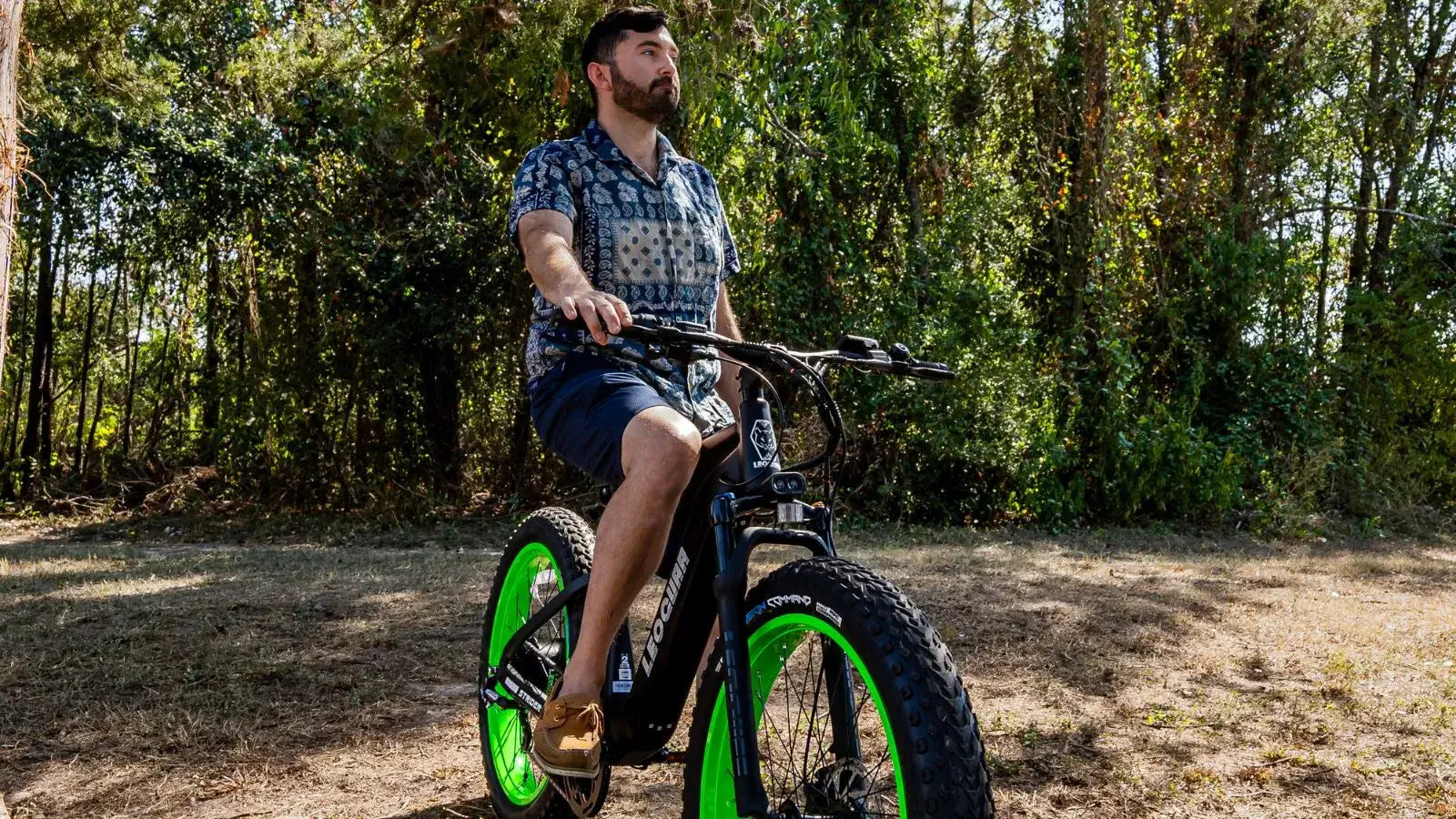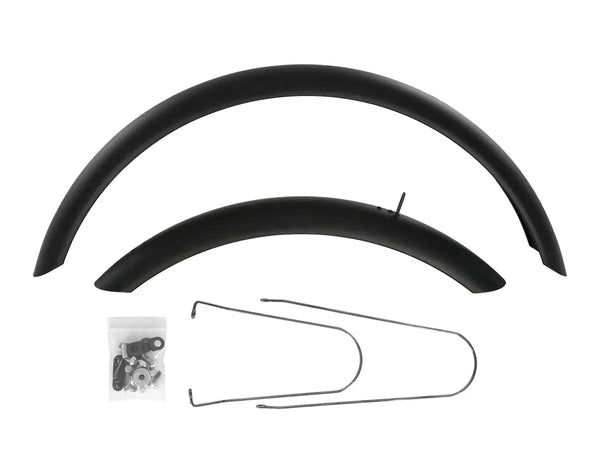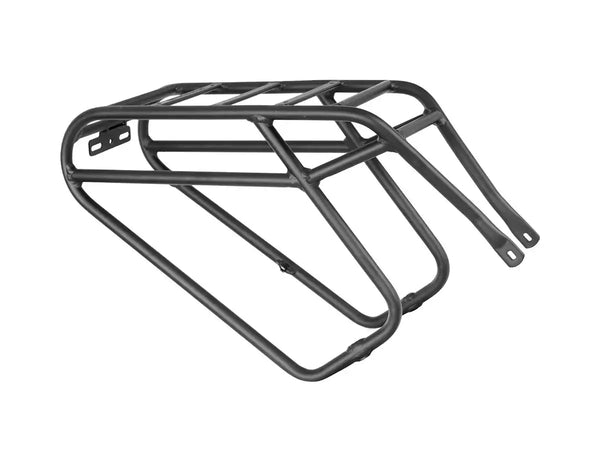
750W Electric Bicycles with Fat Tires: Ultimate Power Guide
The Perfect Match
Have you ever wondered why 750W electric bicycles with fat tires are suddenly everywhere? It's a question we hear a lot, and the answer lies in a powerful balancing act. This specific combination hits a sweet spot, offering an incredible blend of power, versatility, and comfort that few other e-bikes can match. They look imposing, and their capability lives up to the image. In this guide, we'll break down exactly what makes this pairing so effective, explore the real-world performance you can expect, cover the honest trade-offs, and help you decide if this is the right e-bike for your adventures.
The magic of a 750W fat tire e-bike isn't just about having a big motor and big tires. It's about how they work together in perfect synergy. Think of it as a simple formula: Powerful Motor (750W) + Unmatched Grip (Fat Tires) = True All-Terrain Freedom. One component perfectly compensates for the other's weakness, creating a machine that is far more capable than the sum of its parts.
The Synergy of Power
A 750W motor provides the critical torque needed to spin up heavy, wide fat tires. Without this level of power, the bike would feel sluggish and difficult to get moving, bogged down by the increased rolling resistance. The motor turns what could be a chore into an exciting launch. In return, the fat tires provide the huge stability and traction required to safely transfer that power to the ground. This is especially true on loose or uneven surfaces like gravel, sand, or even light snow, where a standard tire would spin out. This working relationship is why these models have become some of the most popular fat tire electric bikeson the market.

The Power Equation
So, what does "750 watts" actually mean for your ride? It's more than just a number on a spec sheet. It translates directly to real-world performance, capability, and even legal classification. Understanding this is key to managing your expectations and riding responsibly.
Hill-Climbing and Acceleration
The primary benefit of a 750W motor is torque. This is the rotational force that gets you moving and pushes you up hills. With a 750W motor, moderate to steep hills become much easier, requiring far less physical effort from the rider. You can maintain a steady speed without having to stand up on the pedals and strain. This power also delivers quick acceleration from a complete stop, a feature that is incredibly useful for navigating city traffic and pulling away from intersections safely.
Speed and E-Bike Classes
In the United States, e-bikes are generally categorized into three classes. A 750W motor is often the legal limit for an e-bike to be classified as a bicycle in many states, which is why it's such a popular motor size.
- Class 1: Pedal-assist only, with a maximum assisted speed of 20 mph.
- Class 2: Features a throttle and can be propelled without pedaling, up to a maximum motor-powered speed of 20 mph.
- Class 3: Pedal-assist only (no throttle), with a higher maximum assisted speed of 28 mph.
Most 750W fat tire electric bicycles fall into Class 2 or Class 3. This means they can either be throttled up to 20 mph or provide pedal assistance up to 28 mph. It's crucial to check your local regulations, as rules can vary. For a deeper dive, you can explore E-bike laws and policies to understand the rules in your area.
Motor Power Comparison
To put 750W into context, here's how it generally stacks up against other common motor sizes.
| Feature | 500W Motor | 750W Motor | 1000W+ Motor |
|---|---|---|---|
| Hill Climbing | Good for moderate hills | Excellent for most hills | Dominates steep inclines |
| Acceleration | Quick | Brisk and powerful | Very rapid, aggressive |
| Top Speed (Typical) | 20-25 mph | 20-28 mph | 28+ mph |
| Battery Consumption | More efficient | Balanced | Higher consumption |
| Ideal Use Case | Commuting, light trails | All-terrain, commuting | Off-road, heavy loads |
The All-Terrain Advantage
The "fat" in fat tires is about much more than just looks. These wide, high-volume tires are the key to the bike's incredible comfort and go-anywhere versatility. They fundamentally change the way the bike interacts with the ground beneath it.
The "Suspension" Effect
Fat tires, typically 4.0 inches or wider, are designed to be run at much lower air pressures than standard bike tires. They often run between 5 and 20 PSI. This large volume of soft air acts as a natural cushion, absorbing bumps, cracks, and vibrations from rough pavement and uneven trails. The result is a remarkably smooth and forgiving ride, often rivaling or exceeding the comfort of bikes with dedicated suspension systems.
Unlocking New Terrains
The true magic of fat tires reveals itself when the pavement ends. Their wide contact patch distributes the bike's weight over a larger area, creating "flotation." This allows the bike to ride on top of soft surfaces like sand and snow, where a narrow tire would dig in and get stuck. On loose gravel, dirt trails, or wet roads, that same large contact patch provides a massive increase in grip, giving you more confidence and control. As expert reviewers note, comfortable fat tires are great on almost all surfaces, transforming previously unrideable paths into your new playground.
Real-World Trade-offs
To provide a truly honest perspective, we need to talk about the downsides. Marketing materials often gloss over these points, but understanding the trade-offs is essential for making an informed decision. From our experience, these are the factors that most often surprise new owners.
The Weight Factor
The first thing you'll notice is the weight. A typical 750W fat tire e-bike weighs between 65 and 85 pounds. This isn't just a number; it's a physical reality. We find this is the most overlooked aspect for first-time buyers. Lifting this bike onto a car rack is a two-person job for many. Carrying it up a flight of stairs to an apartment is a serious workout. Even maneuvering it in a tight garage with the motor off can be cumbersome. The weight is a direct consequence of the robust frame, large motor, big battery, and heavy tires needed for its performance.
Handling and Agility
This is a powerful cruiser, not a nimble racer. The gyroscopic effect of the wide, heavy tires can make the steering feel "sluggish" or want to "self-steer" at low speeds. It's less agile in tight turns compared to an e-bike with standard tires. While incredibly stable in a straight line, it doesn't offer the flickable, responsive handling of a lighter bike. It's a different riding dynamic that takes some getting used to, feeling less like a traditional bicycle and more like a small, two-wheeled SUV. In contrast, a non-fat-tire model often feels much like a traditional bicycle, which some riders may prefer.
Battery Drain and Efficiency
Power comes at a cost, and that cost is battery life. A powerful 750W motor pushing a heavy bike with high-resistance tires will consume more energy than a 500W commuter e-bike with efficient road tires. While many fat tire e-bikes come with large batteries to compensate, your real-world range can be significantly impacted by how you ride. Aggressive use of the throttle, tackling many hills, or riding on soft surfaces will drain the battery faster. Independent testing from Electric Bike Report often demonstrates how terrain and motor power directly affect a bike's achievable range.
Maintenance and Wear
The forces at play on a heavy, powerful e-bike mean that certain components wear out faster. Brake pads, in particular, have to work harder to stop the increased mass. The drivetrain, including the chain and cassette, is under greater strain from the motor's torque. The tires themselves are also more expensive to replace than standard bicycle tires. You should anticipate slightly higher maintenance costs and more frequent checks compared to a lighter, less powerful e-bike.
Is This E-Bike for You?
A 750W fat tire e-bike is a fantastic tool, but it's not for everyone. Here's a breakdown of who we think will love this type of bike—and who might want to consider other options.
The Ideal Rider
- The All-Terrain Adventurer: If your idea of a great ride involves exploring dirt roads, gravel paths, beach fronts, or snowy trails, this bike is your perfect companion. It unlocks terrain that is off-limits to most other bicycles.
- The All-Weather Commuter: For those who need a reliable vehicle year-round, the stability and grip of fat tires are a game-changer on wet, leafy, or even icy roads. The power helps you keep up with traffic, and the robust build handles urban obstacles with ease.
- The Comfort Seeker: If you prioritize a smooth, comfortable ride over top speed and agility, the natural cushioning of fat tires is a dream come true. It smooths out rough city streets and bumpy paths, reducing fatigue on your body.
Who Should Reconsider?
- The Apartment Dweller: If you live on an upper floor with no elevator, the sheer weight of these bikes can become a daily struggle.
- The Multi-Modal Commuter: If your commute involves lifting your bike onto a train or bus, a lighter, folding e-bike would be a much more practical choice.
- The Performance Road Cyclist: If you're looking for speed, efficiency, and nimble handling on paved roads, a dedicated road or hybrid e-bike will better suit your needs.

Key Features to Consider
If you've decided a 750W fat tire e-bike is for you, here are a few key features to compare when shopping.
- Battery Capacity (Wh): Look for the Watt-hour rating, which is the most accurate measure of total battery capacity and potential range. A larger Wh number generally means a longer range.
- Frame Type: Choose between a high-step frame for maximum rigidity or a step-thru frame for easier mounting and dismounting, which is a great feature on a heavy bike.
- Brakes: Given the bike's weight and speed, hydraulic disc brakes are highly recommended. They offer superior stopping power and better modulation with less hand effort compared to mechanical brakes.
- Suspension: While fat tires provide cushioning, a front suspension fork can add another layer of comfort and control, especially for more aggressive off-road riding.
Final Thoughts
Electric bicycles with fat tires powered by 750W motors represent a compelling category of do-anything machines. They offer an unmatched sense of power, stability, and freedom, allowing you to conquer terrain and conditions that would stop other bikes in their tracks. However, this capability comes with the tangible trade-offs of weight, reduced agility, and higher energy consumption. By understanding both the remarkable strengths and the practical limitations, you can confidently decide if this powerful and versatile e-bike is the right partner for your next ride.
Frequently Asked Questions
Q: How fast can a 750W fat tire electric bicycle go?
A: Most 750W fat tire e-bikes can reach speeds of 20-28 mph depending on their classification. Class 2 models typically max out at 20 mph with throttle assistance, while Class 3 models can provide pedal assistance up to 28 mph.
Q: How far can I ride on a single charge with a 750W fat tire e-bike?
A: Range varies greatly based on battery capacity, terrain, rider weight, and usage patterns. Most 750W fat tire e-bikes offer 20-50 miles per charge, with larger batteries providing longer range. Aggressive throttle use and hilly terrain will reduce range significantly.
Q: Are 750W fat tire e-bikes legal to ride on bike paths?
A: This depends on local regulations and the bike's classification. Many areas allow Class 1 and Class 2 e-bikes on bike paths, but Class 3 models may be restricted. Always check your local laws before riding, as regulations vary by state and municipality.
Q: Do I need special maintenance for fat tires?
A: Fat tires require similar maintenance to regular bike tires but may need more frequent pressure checks due to their lower PSI. They're generally more durable but can be more expensive to replace. Regular cleaning and inspection for cuts or wear is recommended.
Q: Can I ride a 750W fat tire e-bike in winter conditions?
A: Yes, fat tire e-bikes excel in winter conditions including light snow and ice. The wide tires provide excellent traction and stability. However, you should use appropriate tire pressure for conditions, consider studded tires for icy conditions, and protect the battery from extreme cold.









































Leave a comment